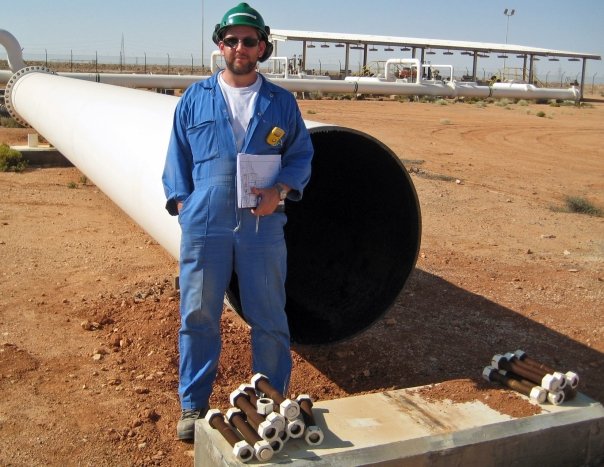A week before starting at Olwg, I went to Devon with two friends from university; a trip which marked the conclusion of an incredibly long post-graduation summer. Between surfing, walks and a fair few beers, conversation inevitably turned to the jobs that we were each about to enter into. Ever the worrier, I would tediously recount some of the concerns that crossed my mind before going to sleep at night:
- What if I add no value to this new business and become a financial burden?
- What if I mess up a calculation within a model which brings a project to its knees?
- What if I accidentally call Tony ‘Dad’?
It was time to get a grip.
My mates would roll their eyes and offer a few consolatory words, and I’d ultimately accept how lucky I was to have secured a job which would allow me to pursue my passion of contributing towards the global shift to low-carbon energy (or to have secured a job at all, given the bleak post-COVID landscape). I’ve been concerned about climate change for as long as I can remember, and I was finally on the brink of making a meaningful impact on greenhouse emissions.

‘My Degree was a Breeze’ – my (ex) housemate’s kind (?) reminder of both my penchant for renewables and the almost constant stress that seemed to come with my studies
One month in and I’ve established that my Chemical & Energy Engineering degree – which introduced the principles of modern energy production and demanded a copious amount of research and model development – has actually prepared me quite well for a role in which I’m required to research modern energy production in order to develop models. Working so closely with Tony and Rosie means that I’m able to pick up a lot of industry wisdom, and the three of us have settled into a good routine. Regular Teams meetings are filling in the gaps created by remote working, and we’re each making steady progress in our respective roles.
In fact, the only thing I’ve struggled with since day one is a thought that I didn’t even consider before starting: is any of this really going to make a difference? To be clear, I wasn’t expecting to single-handedly suck all carbon dioxide from the atmosphere on day one, or to stumble upon an infinite energy resource during my commute into Brentford. However, it is hard not to consider how much of an impact one can have whilst performing calculations on a spreadsheet.
Professor Timothy Morton describes climate change as a hyper-object – an entity so large that attempting to comprehend it is comparable to looking at a four-dimensional object in three-dimensional space. I think this is also true of the solutions to climate change. There is no silver bullet, even supplying the entire grid with green electricity would only write off approximately a quarter of UK emissions; then there’s transport, heating, agriculture, and the industrial sector to consider. So how could I possibly grapple with an issue of this magnitude?
Get a grip, ditch the hero mentality, and control the controllables.
By concentrating our efforts on one technology at a time, we’ve been able to make steady progress over recent weeks. We first focused on carbon capture and storage, developing a relatively simple working process which was subsequently applied to the exciting world of hydrogen. Put simply, we collated robust datasets comprised of benchmarked figures and correlations literature. These have then been fed into a dynamic model, which is beginning to offer some really valuable insights.
Whilst Tony continues his iterative development of the model, my focus has been primarily on research and data collection. I’d had limited exposure to carbon capture during my studies, so this was a great opportunity to get stuck into a technology that is often touted as being integral to reaching emissions targets. Whilst the huge volume of papers, reports and webinars on the topic are indicative of genuine ambitions to ramp up the adoption of this tech, the fact remains that there are only 19 dedicated capture facilities worldwide. At times this lack of uptake felt like a deliberate conspiracy devised to make my job of generating a statistically significant dataset more difficult, but in reality it speaks to a more serious issue: capturing carbon is really expensive.
Chevron’s Gorgon Project in Western Australia started operation last year (after a two-year delay due to higher than expected levels of water in the gas stream), the LNG plant has an annual CO2 capture capacity of up to 4 million tonnes. To put that figure into context, it’s approximately equivalent to the yearly emissions from 200,000 average UK households. There’s no debate that this is an incredible feat of engineering, but at an estimated cost of 2.5 billion AUD is this really a marketable solution? With the costs of renewables continuing to fall, would funds not be more sensibly diverted away from fossil projects all together? Would it even be more cost effective for Chevron to simply emit the carbon and invest the huge capital for the capture plant into tree planting schemes, or efforts to prevent deforestation?
These are big questions upon which our model will soon be able to shed some light (and will be the subject of a future blog post). Ultimately, the technology looks set to stay – the EU has stated that each of its pathways to net zero emissions rely to some degree on active emissions mitigation. There are also some really exciting proposals, such as Drax power station in Yorkshire’s ambitions to deliver negative emission electricity by using a combination of biomass burners and a capture facility.
Hydrogen has its own hurdles to overcome, with the delivered price of green (renewably-derived) gas still significantly higher than the grey (natural gas-derived) alternative. The ‘chicken or egg’ paradigm, with investment in generation requiring a market, and a market for hydrogen requiring, well, hydrogen, has also slowed progress. However, the falling price of electrolysers and widespread acceptance of the integral role of hydrogen in the future energy landscape looks set to push the industry forward. Last week, a webinar host proclaimed that pumping hydrogen into a single salt cavern beneath Los Angeles had the potential to store 150 times the amount of energy that the total installed capacity of lithium ion batteries in the US today could retain. Snippets like these are an excellent example of why I think hydrogen is such an exciting industry.
Looking forward, we’re in the process of using the wizardry that is PowerBI to increase the scope of our data analytics and create dynamic dashboards. Rosie is continuing to work her magic on the website and company marketing which will hopefully generate more interest in what we’re doing. I’m finding comfort in our progress and feel incredibly lucky to be working in an industry in which I’m genuinely interested. I’ve also avoided any confusion between Tony and my dad, which is a plus.





